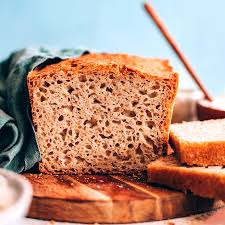For most Indian households, roti is comfort food. It’s what we eat daily, pair with sabzi, daal, or even roll with sugar and ghee as a snack. But if you’re going gluten-free — either due to celiac disease, intolerance, or just clean eating — the question becomes serious:
Is your roti really gluten-free?
Spoiler: Most aren’t. And many people don’t even know why.
🌾 What Traditional Roti Is Made From (And Why It’s Not Gluten-Free)
The classic Indian roti is made from wheat flour (atta) — and wheat contains gluten, a protein that helps the dough stay elastic and soft.
So unless you’ve swapped the atta with a gluten-free flour, your everyday roti is definitely not gluten-free.
🚩 Hidden Gluten in “Healthy” Rotis
Many people assume that multigrain, high-fiber, or even branded atta like “chakki atta” is safe. But here’s the catch:
- Multigrain atta still contains wheat (with some barley, millet, etc.)
- Branded atta doesn’t guarantee gluten-free unless labeled as such
- Even organic wheat has gluten — going organic doesn’t change that
So yes, unless it clearly says “gluten-free” on the packet, it’s not safe for celiacs or gluten-intolerant folks.

🧐 “But I Feel Fine After Eating It…”
This is super common. Some people with mild intolerance don’t show symptoms immediately. But gluten can cause long-term inflammation, gut issues, bloating, or skin flare-ups — even if the reaction isn’t dramatic.
If you’re trying to clean up your diet, deal with autoimmune issues, or just feel lighter, going truly gluten-free means cutting out atta-based rotis completely.
✅ Gluten-Free Flours You Can Use for Rotis
Luckily, India has amazing naturally gluten-free flours you can use to make rotis. Here’s a quick list:
| Flour | Texture | Best Use |
|---|---|---|
| Besan (gram flour) | Soft, slightly nutty | Chilla, thick rotis |
| Ragi (finger millet) | Earthy, dark | Great for soft rotis |
| Jowar (sorghum) | Mild, grainy | Thin rotis |
| Bajra (pearl millet) | Heavier | Best for winter rotis |
| Rice flour | Light, crumbly | Mix with others for better hold |
You can also mix 2–3 flours together to get a balanced, soft dough.
👩🍳 Common Issues with Gluten-Free Roti (And How to Fix Them)
- Dough Cracking?
Add warm water while kneading and use a bit of oil or boiled potato mash to bind better. - Won’t Puff Like Regular Roti?
That’s okay — gluten is what helps puffiness. Focus on taste and texture, not the balloon. - Too Hard After Cooking?
Keep covered in a cloth after cooking to retain softness.
🛒 Do You Need Special Gluten-Free Atta?
Some brands now sell pre-mixed gluten-free atta blends:
- Aashirvaad Nature’s Superfoods – Gluten Free Flour
- Dr. Schär or Bob’s Red Mill (for international)
But truthfully, homemade blends with ragi + jowar + rice flour are cheaper, fresher, and tastier.
🧠 Final Word
So no — your regular roti isn’t gluten-free.
But with a few smart swaps, your next one can be.
And who knows? You might just find a new favorite in a ragi roti with ghee and jaggery or a soft bajra paratha with aloo sabzi.
Gluten-free doesn’t have to mean flavor-free. It just means you’re eating smarter, and in many ways, closer to what our ancestors did.
